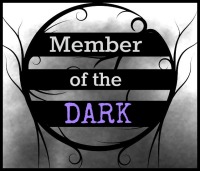
Yahoo Image Search
I’m going to touch on two things this week: PERSONIFICATION and ANTHROPOMORPHISM. These two literary tactics get mixed up a lot because they’re very similar. Even the image above isn’t giving the full story. So, let’s start with the first one. What is Personification?
Simply put, Personification is when a non-human demonstrates human qualities. This could be an animal or object. It doesn’t even have to actually demonstrate the quality, but be given it by the author or another character. Betting everyone has something in their head right now, but we’ll see if it’s this or Wednesday’s topic.
Personification is fairly easy to figure out and common. So much so that it gets taught in K-12 programs while anthropomorphism isn’t touched on. This might be another reason the two are treated as one and the same. It’s simply easier to say every non-human with a human trait is personification. Yet, one of the tricky things is that you’re probably looking at the correct usage in school and don’t know of the variation.
Here are some examples:
- Lightning dances across the sky.
- Rain pummels the jogger.
- The night was calling to her.
- The sun puncturing your sleep.
None of those things are actually doing those things with intent. Dancing, pummeling, calling, and puncturing are all human actions. The other things are just existing and doing what they do. Yet, we add these verbs in order to give a better description of what is going on in the scene. This paints a bigger and more vivid picture than if you said:
- There was lightning in the sky.
- It was raining.
- She went out at night.
- The sun woke me up.
Those four are rather dull and lifeless. Regardless of how excited you say it, the previous versions had more of a kick. That is the biggest purpose of personification. To give your world-building and exposition a blast of excitement. The readers now imagine these non-human things doing what you are describing. They still know that such things are impossible, but now it’s more interesting. It works off the suspension of disbelief at the lowest level because we know how personification works. This knowledge is in our heads if we don’t know it’s going on.
Personally, I think this is one of the easiest writing tricks to use. It’s low risk because it’s so common and adds a little flavor to the story. People are used to it, so you won’t get backlash unless you use the same ones over and over again. There’s plenty of variety to get the same point across, which can help expand your vocabulary. You’re forced to think of other ways to describe things, which enhances your word usage. I get into ruts, so this one really helps me out.
Most importantly, personification brings a lot of personality to the world. The types of words you use can set the tone If you use gentle words then it creates a calming and soothing atmosphere. Violent ones can up the tension and lustful ones can create a steamy setting. For example, if I start describing things as screaming, snarling, and furious then the reader will get a certain tone in their head. In this case, it would be loud, tense, angry, and stressful. Hopefully that’s what I’m going for, which it should be.
So, what do you think about personification?





Reblogged this on Chris The Story Reading Ape's Blog.
LikeLike
Thanks for sharing.
LikeLiked by 1 person
I’m all for anything that dresses up prose, as long as it makes sense. Here are two examples from Dickens’s A Christmas Carol:
“Upon its coming in, the dying flame leaped up, as though it cried, “I know him! Marley’s Ghost!” and fell again….”
“[It] must have run there when it was a young house, playing at hide-and-seek with other houses…”
LikeLike
Love those examples.
LikeLiked by 1 person
The second one is one of my favorites.
LikeLiked by 1 person
I liked your examples of personification. I think we all could use more of it in our writing. This was an eye-opener, Charles. Thanks.
LikeLike
Glad you enjoyed it.
LikeLiked by 1 person
It’s fun to use personification! Like you said, it makes the language more interesting. For me, though, it isn’t actually making us think the lightning punched someone. It’s purely the perspective of the character describing it that way.
LikeLiked by 1 person
It definitely makes writing more impactful. I do wonder how many people mistake it for being real instead of colorful description.
LikeLike
I agree, Charles. Personification makes writing more vivid and alive.
LikeLike
Definitely.
LikeLike
I’d never heard it referred to this way, but completely agree about your point. I’m one who immediately thought about some of my characters, but the post went a different direction.
LikeLike
I’m curious. What did you think the post would be about?
LikeLike
Anthropomorphism
LikeLike
That’s going to be tomorrow. 😁
LikeLiked by 1 person
As an Animist, this comes naturally to me as both a reader and a writer. Of course the storm had it in for you! Or the tree branch barely missed you as a warning. 😉
LikeLike
Never heard the term ‘Animist’ before. For some reason, I keep thinking of something like a shaman.
LikeLike
Close. Animism is the belief in the existence of individual spirits that inhabit natural objects and phenomena. Native Americans have an animistic belief system, for example.
LikeLike
I remember reading about that in college. Mostly by going through animal spirit books.
LikeLike
Reblogged this on NEW BLOG HERE >> https:/BOOKS.ESLARN-NET.DE.
LikeLike
Thats an interesting topic. Thanks for sharing, Charles! Honestly i have to overthink more than twice, but it gives me a kick. xx Michael
LikeLike
Glad you enjoyed it. Thanks for sharing too. I’m going to post about anthropomorphism tomorrow.
LikeLiked by 1 person
Thanks, Charles! Thats great and also very interesting! xx Michael
LikeLike